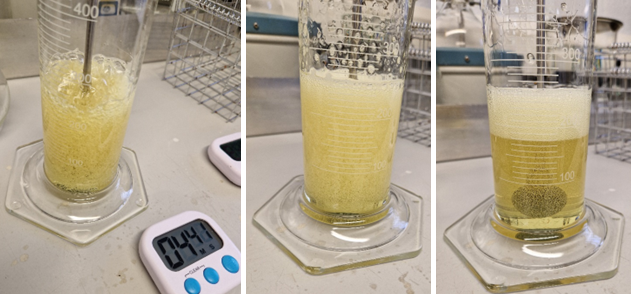Foaming Characteristics
Foaming of lubricating oils is a relatively common issue. It is especially pertinent in applications involving turbulence, high speed gearing or high volume pumping, where it can lead to inadequate lubrication, cavitation, overflow or premature oxidation. Foaming can be countered by addition of anti-foaming additives (typically silicone compounds), however over-addition can lead to deterioration of the Air Release properties. The additives also deplete over time and should be monitored, together with the oil’s foaming characteristics.
The test involves passing controlled quantities of air through the sample at specific temperatures. The amount of foam generated reflects the foaming tendency, while the amount left after specified settling time is the foaming stability. There are three test sequences (at 24, 93.5 and 24 degrees C for the same aliquot which underwent sequence II testing). The results are given for the three test sequences, and expressed as “Foaming Sequence I XXX/YYY”, where XXX is the amount of foam generated and YYY the amount of foam after the settling phase, both are expressed in ml.
Typically Foaming Characteristics are measured to ASTM D892 or IP146.

